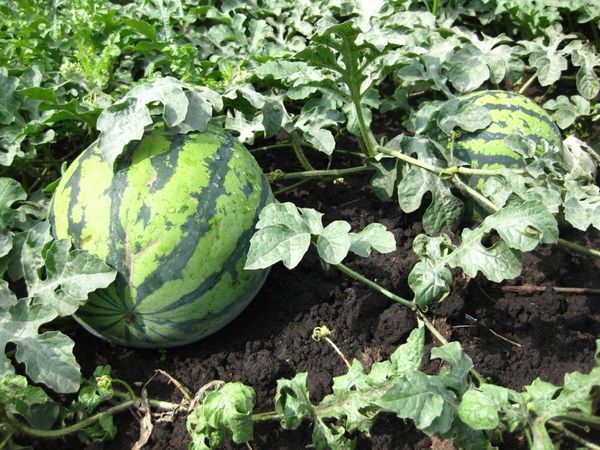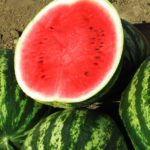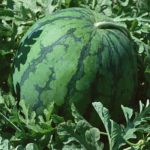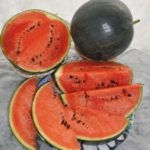Watermelon is a very tasty and healthy gourd culture, containing in its composition a large amount of vitamins. Growing large watermelons and melons in the open ground requires a large amount of heat and sunlight, which is why many people think that it is impossible to get such a crop in Siberia, but in fact this is not the case, the main thing is to follow the basic recommendations and everything will turn out.
Table of contents
Where can I grow watermelons in the open field
Growing watermelons is possible not only in the south of Russia, but also in the Urals, Siberia, the Altai Territory, the Moscow region and other central regions. The main thing to remember a few rules and be sure to take them into account when planting and germinating fruits.
It is worth noting that grow large watermelons, weighing 10-15 kilograms will be is impossiblebecause they do not have time to mature in the short summer characteristic of the regions described above. Plants will have time only to form a thick and durable tops and release flower stalks, after which temperatures will drop and all plantings will stop developing and die.
Watermelon varieties are ideal for planting in the northern and central regions. with fruits of small size and short ripening. In this case, the harvest will be able to fully form over the entire course of the warm season.
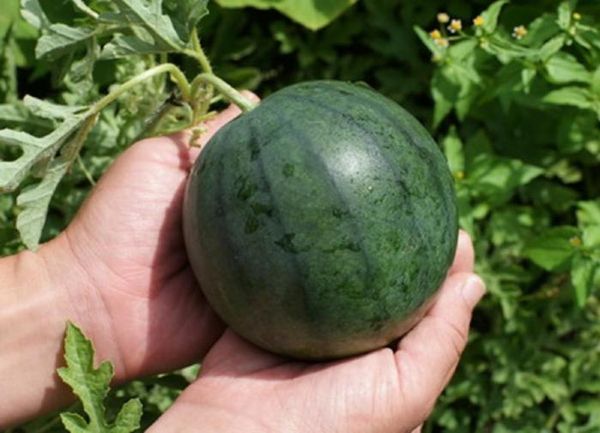
What sort of watermelon is suitable for planting and growing in Siberia
Watermelon must have the following characteristics:
- Good frost resistance and comparative stability before the return frosts characteristic of central Russia;
- Fruit weight should not exceed 5 kilograms otherwise, they will not have time to mature, because they do not have enough sunlight and heat;
- It is recommended to choose early or ultra early varieties. In this case, the chance of getting a quality crop becomes much higher. The entire period of ripening of watermelons should be 65-80 days;
- The variety must be zoned for the cultivation area.
Seeds are best purchased in specialized stores, because self-produced planting material may refer to an unknown hybrid variety. The plants thus obtained do not retain their original qualities.
For cultivation in Siberia, the Urals and central regions, varieties are best suited Light, Ultra Early, Northern Lights, Siberian Lights, Siberian, Skoryk, Sugar Baby or Sugar Baby etc.
- The light
- Ultra early
- Northern Lights
- Skorik
- Sugar Babe
Proper seedling growing
Growing watermelon seedlings is a very responsible and painstaking process that requires careful attention of gardeners. It is especially important for the formation of fruits and the growth of culture in the northern and central region of the country, because in this case, sowing seeds immediately in open ground will not bring the desired results.
Suitable for landing on a permanent place seedlings at the age of 30-35 days. Based on this, it can be concluded that seed preparation can begin at the end of April, approximately 25-30 numbers.
In order to get friendly shoots, planting material must be properly prepared and carry out the following procedures:
- Warming up - The seeds are laid out next to the heating devices and hold in such a place for 6-8 days, the main condition for bude is a comfortable temperature of 25-30 degrees. In this case, the seeds will sprout faster and begin to grow;
- Soak - during this procedure, dry seeds are saturated with moisture. Planting material is placed in warm water, a weak solution of salt or 3% solution of ammonium nitrate for 2-3 days, while it is regularly stirred.The entire period of such work, the temperature of the liquid should remain in the range of 23-25 degrees. With the help of soaking, it is also possible to identify unsuitable seeds for planting. They are light and hollow because of what they do not sink in both water and solution. Even if such planting material can climb, then he is unlikely to form an ovary.
- Disinfection carried out by soaking the seeds in a 1% solution of potassium permanganate. The duration of the procedure is 20-30 minutes.

As the soil using the following fertile mixture:
- 2 pieces of sod land;
- 2 parts of humus;
- 1 part of sand;
- 50 grams of ammonium nitrate;
- 50 grams of dolomite flour;
- 100 grams of superphosphate.
The size of the landing tank must be not less than 8x8 centimeters. During the day, the temperature is maintained at 25–30 degrees, and at night, 18–20 degrees. With a successful scenario, the first shoots should appear within 5-7 days.
In the future, in 3-5 days the first true leaf should appear, the second leaf is formed after the same period. Immediately after the emergence of sprouts, they are fed with a solution of bird droppings, prepared in a proportion of 1k20. Watering is carried out very carefully and moderately.
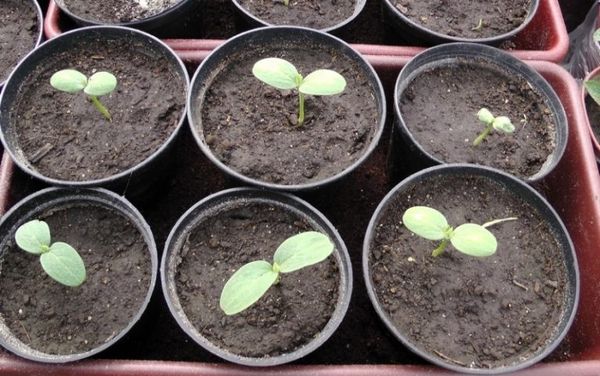
Considering that in the Urals and in Siberia there is a rather short light day, the seedlings may require artificial lighting.
A very important procedure will be hardening seedlings. First, it is carried out for 20 minutes to the shady side of the balcony, then to the sun. The specified time is gradually increased.
Planting seedlings at their summer cottage
Soil preparation for planting watermelons at the dacha or in the greenhouse should be carried out in the autumn, so that the ground can accumulate the necessary amount of nutrients during the winter:
- To plant watermelons choose elevated sunny areas with deep groundwater, otherwise a good solution would be the construction of drainage from pebbles, expanded clay and broken bricks;
- The soils on which potatoes, cabbage and onions were previously grown are best suited;
- For watermelons dig ridges, a width of 1.5 meters;
- While digging in the ground make a complex mineral fertilizer and humus.
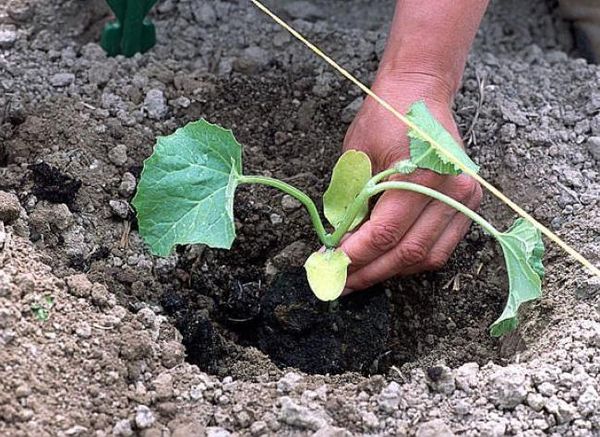
After the hills are formed covered with black film, through which the earth warms up most quickly. Also, such planting material can be a quality replacement for mulch.
In the central region and the suburbs, watermelons are planted in open ground. At the beginning of June, and in the Urals and Siberia at the end of this month.
The main indicator will be the absence of the threat of return frost:
- on each knoll they cut the film and make a shallow hole;
- seedlings are carefully removed from the containers, after having been abundantly moistened with an earthen clod;
- seedlings are placed in the wells and instilled so that the central part is flush with the soil surface;
- then planting is watered, if the film has not been laid, the watermelons will additionally mulch.
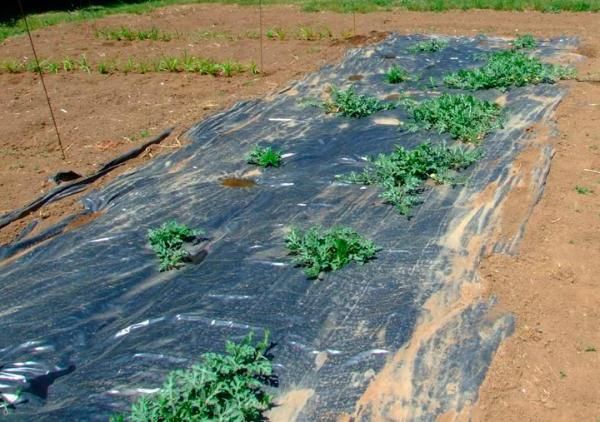
Departure after disembarkation
In order to grow a crop of tasty watermelons in the Moscow region and the northern regions they need to be properly maintained. First landing is necessary clean weeds and loosen the ground regularly. In order to ensure a favorable air regime of the plant, spud up to the cotyledon leaves.
Watering produce 3-4 times per seasonusing at the same time 40-60 liters of water per 1 square meter. This procedure is very important for the plant during the flowering and ripening of fruits, but when over-wetting the soil, the watermelon can get sick and die. After watering the soil must be mulched. In this case, the earth as long as possible will remain loose and moist.
Watermelon feeding is carried out 2 times per season, at the beginning of summer and at the end. As a fertilizer, a mullein, diluted 1k10 or a bird’s flight solution, prepared in a 1c20 proportion is used. Top dressing combined with watering.
In order for the fruits to ripen as quickly as possible, to be more sugar and tasty it is necessary to produce nipwhile adhering to the following rules:
- Pinch the top of the plant at a height of 5-6 leaves. In this case, more active growth of lateral shoots will begin, on which fruits are formed;
- Then pinch the points of growth of the shoots, which formed the fruit. On one plant should be formed no more than 3 watermelons.
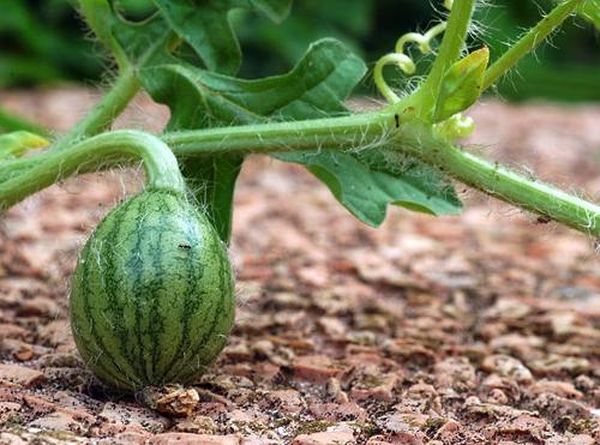
After the diameter of the fetus will be equal to 5-7 centimeters, it is fixed in such a way that the stem is at the top. In this case, the watermelon will ripen more evenly.
Harvesting
The main signs of maturation are:
- dried fruit stem;
- characteristic sound when tapping.
If you comply with all the terms for planting, then ripe fruits can be collected mid to late August. This rule applies to watermelons grown in the Moscow region, Siberia and the Urals.
Growing watermelons on your own plot in cold regions is quite possible, the main thing is to choose the right variety and not to neglect the basics of planting and caring for plants.
